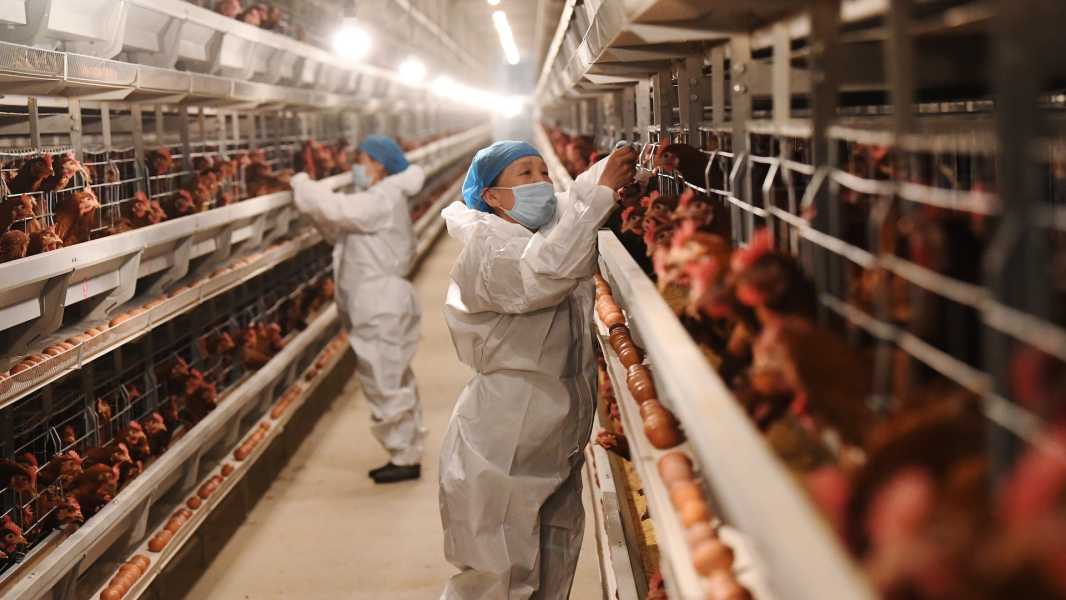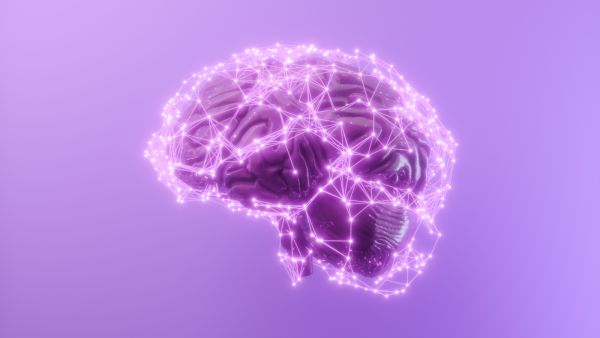
Workers who frequently come into contact with potentially infected animals are at high risk of contracting bird flu. (Image courtesy of NurPhoto via Getty Images)
Disease forecasting is like weather forecasting: we can't predict the fine details of a particular epidemic or a particular storm, but we can often identify when these threats will occur and prepare for them accordingly.
Bird flu viruses pose a potential threat to global health. Recent outbreaks of the H5N1 subtype in animals have scientists particularly concerned. Although human cases of H5N1 have been relatively rare, just over 900 cases have been reported worldwide since 2003—almost 50% of them fatal—a fatality rate about 20 times higher than that of the 1918 flu pandemic. If the worst of these rare cases were to ever spread to humans, the consequences could be catastrophic.
From an anthropological perspective, my colleagues and I recently published a book called Emerging Infections: Three Epidemiological Transitions from Prehistory to Modernity, which examines how human behavior has influenced the evolution of infectious diseases, beginning with their first significant appearance in the Neolithic and continuing through the present day over a period of 10,000 years.
When viewed over the long term, it becomes clear that H5N1 exhibits a general pattern of stepwise invasion from animal to human populations. Like many new viruses, H5N1 introduces gradual evolutionary changes that may allow it to spread from person to person. The periods between these evolutionary stages provide an opportunity to slow this process and perhaps prevent global catastrophe.
Spread and Viral Chatter
Once a pathogen, such as the influenza virus, has already adapted to infect a particular animal species, it may eventually develop the ability to infect a new species, such as humans, through a process called translocation.
Spread is a complex process. To be successful, a pathogen must have the right set of molecular “keys” that are compatible with the molecular “locks” of the host so that it can enter and exit host cells by hijacking their replication machinery. Because these locks often vary between species, a pathogen may have to try many different keys before it can infect an entirely new host species. For example, the keys that a virus successfully uses to infect chickens and ducks may not work in cattle and humans. And because new keys can only arise through random mutation, the chances of getting all the right keys are slim.
Given these evolutionary complexities, it is not surprising that pathogens often get stuck midway through the spread process. A new variant of a pathogen can only spread from an animal to a person who is either more susceptible due to an existing disease or more susceptible to infection due to prolonged exposure to the pathogen.
Even then, the pathogen may not leave the human body and be transmitted to another person. That is the current situation with H5N1. Over the past year, there have been numerous outbreaks in a variety of wild and domestic animals, especially birds and cattle. But there have also been a small number of human cases, most of them among poultry and dairy workers who have had close contact with large numbers of infected animals.
Sourse: www.livescience.com





